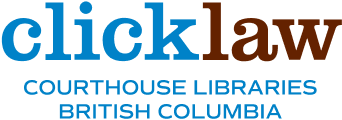Employment Law for Temporary Foreign Workers
The same laws and regulations that protect all British Columbians also apply to temporary foreign workers. However, as temporary foreign workers, there may be some restrictions on their terms of employment. For example, a temporary foreign worker is usually restricted to working for a specific employer.
For workers who aren’t familiar with employment law in BC, it can be tricky trying to tell the difference between what may be an actual restriction and what is against the law. Two organizations, MOSAIC and the Employment Standards Branch, have resources available on Clicklaw that can help.
MOSAIC is a multilingual non-profit organization that supports immigrant and refugee communities and has produced the following resources with information for temporary foreign workers, available in four additional languages (Chinese (simplified), Korean, Punjabi, Spanish):
- FAQ: Workers’ Rights and Employment Standards
- FAQ: Legal Rights and Responsibilities of TFWs in BC
- Modern Day Slavery
- FAQ: Moving from TFW to Permanent Residency in Canada
Additionally, MOSAIC has a Legal Clinic for Temporary Foreign Workers.
The Employment Standards Branch has a series of employment fact sheets, including the resource Employment Standards for Foreign Workers, which is available in in PDF format in six additional languages (Chinese (traditional), French, Korean, Punjabi, Spanish, Tagalog/Filipino). The resource describes what the law says about the rights of foreign workers, including payment of wages and what happens if employment ends.


